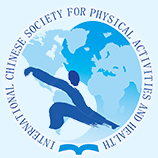Document Type
Article
Keywords
exercise attitude, attitude ambivalence, gender difference, body weight status
Publication Date
7-19-2023
Abstract
Objectives: The purpose of this study was to determine the proportions of students who were holding positive, negative, and neutral cognitive/affective attitude and different cognitive-affective attitudinal structures toward moderate-to-vigorous physical activity (MVPA) using a person-centered approach. Methods: A total of 3949 students participated in this study (1065 middle-school students, 784 high-school students, and 2100 college students). Results: A majority of students were holding positive cognitive (about 94%) and affective attitude (about 85%) toward MVPA. Most students (about 84%) held the Positive cognitive—Positive affective attitudinal structure toward MVPA. School level influenced the proportions of students who were holding different cognitive attitude status, affective attitude status, and cognitive-affective attitudinal structures; gender and body weight status did not significantly influence them. Conclusions: This study furthers our understandings on students’ attitude and attitudinal structures toward PA. It lays the foundation for the development of physical education curriculum or PA programs that aim at promoting students’ PA behavior through changing their PA attitude. Future studies are needed to examine the effects of different attitude statuses and attitudinal structures on PA behavior.
DOI
https://doi.org/10.18122/ijpah.020305.boisestate
Recommended Citation
Wang, Yubing; Li, Pan; Han, Yaogang; and Zhang, Binn
(2023)
"Understanding Students’ Cognitive and Affective Attitude and Attitudinal Structures Toward Physical Activity: A Person-Centered Approach,"
International Journal of Physical Activity and Health: Vol. 2:
Iss.
3, Article 5.
DOI: https://doi.org/10.18122/ijpah.020305.boisestate
Available at:
https://scholarworks.boisestate.edu/ijpah/vol2/iss3/5
Included in
Exercise Science Commons, Health and Physical Education Commons, Public Health Commons, Sports Studies Commons


